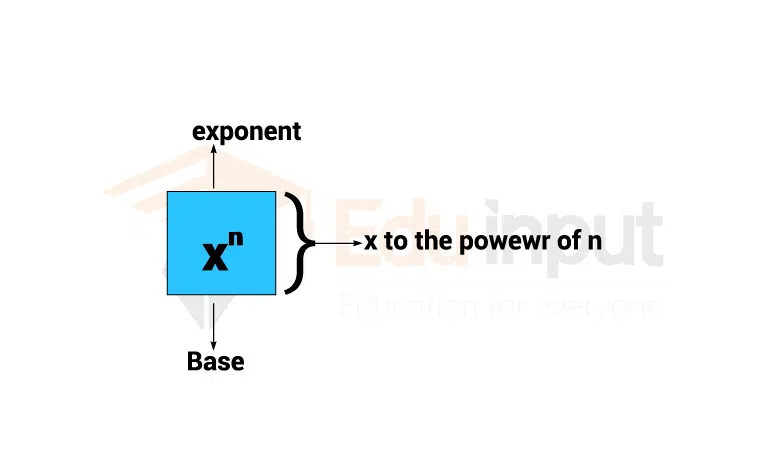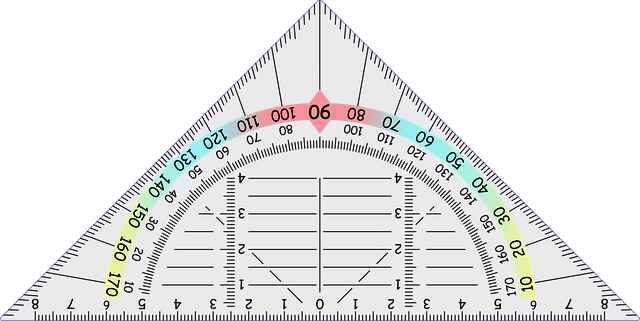What is an Exponent Mean in Math?
An exponent of a number shows how many times we are multiplying a number by itself. For example, 43 means we are multiplying 4 three times. Its expanded form is 4x4x4. Exponent is also known as the power of a number. It can be a negative number, whole number, fraction, or decimal. Let’s learn more about exponents in this article.
What is an exponent?
The exponent of a number shows how many times the number is multiplied by itself.
For example;5×5×5 can be written as 125, as 5 is multiplied by itself 3 times. Here, 5 is called the “base” and 3 is called the “exponent” or “power.” In general, xn means that x is multiplied by itself for n times.

Here, in the term xn,
- n is called the “exponent”
- x is called the “base”
- xn is read as “x to the power of n” (or) “x raised to n”

For an example of an exponent:
- -2x-2x-2=(-2)3
- 7x7x7x7=74
- axaxaxaxaxa=a6
Exponents are very important because, without them, when many times a number is repeated by itself it is very difficult to write the product. For example, it is very easy to write 64 instead of writing 6x6x6x6.
Law of exponent:
The laws of exponents or properties of exponents are used to solve problems involving exponents. These properties or laws are also considered as major exponent’s rules to be followed while solving exponents. The law of exponents is mentioned below.
- Law of Quotient: am/an = am-n
- Law of Zero Exponent: a0 = 1
- Law of Power of a Power: (am)n = amn
- Law of Power of a Product: (ab)m = ambm
- Law of Power of a Quotient: (a/b)m = am/bm
- Law of Product: am × an = am+n
- Law of Negative Exponent: a-m = 1/am
What is the Exponent with the fraction?
If an exponent of a number is a fraction, it is known as a fractional exponent. Cube roots, Square roots, , and nth roots are parts of fractional exponents. A number with power 1/3 is termed as the cube root of the base. Similarly, a number with a power of 1/2 is called the square root of the base. Some examples of exponents with fractions are 52/3, -81/3, 105/6, etc. We can write these as:
52/3 = (52)1/3 = 251/3 = ∛25
-81/3 = ((-2)3)1/3 = -2
105/6 = (105)1/6 = 6√105 = 6√100000
What is a Decimal exponent?
If an exponent of a number is given in the decimal form, it is also called the decimal exponent. It is difficult to calculate the correct answer of any decimal exponent so we find the approximate answer for such cases. Decimal exponents can be solved by first converting the decimal in fraction form. For example, 91.5 can be written as 93/2 which can be simplified further to get the final answer 27. i.e., 93/2 = (32)3/2 = 33 = 27.
What is a negative exponent?
A negative exponent are also called how many times we have to multiply the reciprocal of the base. For example, if it is given that a-n, it can be writie as 1/an. It means we have to multiply e reciprocal of a, i.e 1/a ‘n’ times. Negative exponents are used while writing fractions with exponents.
For example:
4-3=1/43
63-2=1/632
What is scientific Notation with exponent?
Scientific notation is the standard form of writing very large numbers or very small numbers. In this, numbers are written with the help of decimal and powers of 10. A number is said to be written in scientific notation when a number between 0 to 10 is multiplied by a power of 10. in this case, when numbers less than 1, the power of 10 will be negative. While a number greater than 1, the power of 10 will be a positive exponent, learnt the steps for writing numbers in scientific notation with exponents:
- Put a decimal point after the first digit of the number from the left. If there is only one digit in a number excluding zeros, then we don’t need to put decimal
- Multiply that number with a power of 10 such that the power will be equal to the number of times we shift the decimal point.
For example:
650000=6.5×105
0.0006578=6.578×10-4







Leave a Reply